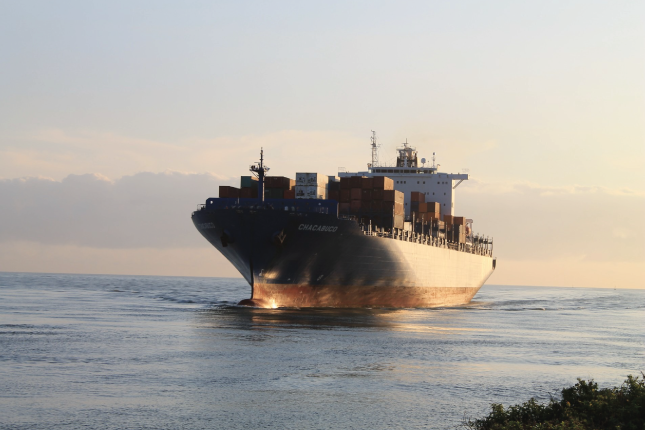Ship owners looking to comply with the incoming IMO global sulfur cap of 0.5% for marine fuels should be starting to prepare today. We’ve looked at the different options to achieve compliance and avoid fines to make it easy.
The IMO sulfur regulations 2020 set a cap of 0.5% sulfur content for marine fuel. Set to come into effect globally on 1st January 2020, there’s still substantial uncertainty surrounding both the new regime’s implementation and enforcement. While the majority of the world’s shipping industry is fully behind the positive environmental benefits the cap will bring, it also wants to minimise disruption during the transition period.
The best way for ship owners to ensure they fully comply with the new sulfur regulations, with minimal operational disruption, is to start preparing now. There is no single solution for ship owners, and the best option will depend on the size and type of vessel, your operations and the availability of fuels. While the IMO regulations represent one of the most significant changes to global shipping in recent history, there are a number of options that ship owners can consider now to make the change as seamless as possible.

The most obvious preliminary step for ship owners is to begin the switchover from heavy fuel oil (HFO) to marine gas oil (MGO) as it’s convenient and MGO is widely available. The switch to distillate fuels doesn’t involve changes to the majority of vessels’ engines, but will likely involve higher fuel costs in the short to medium term. The change could also throw up operational issues related to the mixing of fuels with different viscosities, such as determining the correct change-over temperature increments.
There is little doubt that the introduction of the IMO sulfur regulations 2020 will lead to a rise in fuel costs for ship owners. Desulfurisation is a costly process and these increased production costs will feed through to the rest of the shipping industry. Marine fuel with low sulfur content should be, however, compatible with most engine configurations so there will be no equipment costs for the majority of ship owners.
There are some concerns that operators need to be aware of, however, including variability of quality of blends.
There is a range of emerging fuel types that could be considered by ship owners. The most prominent members of this new class of alternative fuels are methanol, biofuel varieties and liquefied petroleum gas (LPG). The market impact of these fuels is currently fairly low due to inconsistent supply across the world, but could be viable for operators that can guarantee a regular supply. Aside from some types of biofuel, committing to alternative fuels with low sulfur content requires retrofitting special adaptive engines and fuel treatment systems.
Installing a scrubber system is a viable option for IMO 2020 compliance. Costing between $5-$10 million, these solutions centre on the installation of exhaust gas cleaning technology. While no changes are required to the engine or fuel treatment plant, there is a high investment cost for the exhaust gas cleaning plant and more power will be needed to run it. The current high cost differential between high and low sulfur content marine fuels could have ship owners deciding that the increased operational costs of scrubber systems are a more manageable option.
In 2018 the IMO added an amendment to the IMO sulfur regulations 2020 banning any vessel from carrying fuel above the 0.5% sulfur limit unless they have a scrubber fitted
The technology is not without its critics though, with disposal of waste singled out as a particular concern. Belgium and Germany have introduced legislation that bans the discharge of scrubber water in their jurisdictions and other EU countries look set to follow suit. Many ship owners will find it hard to justify the cost, and many have expressed concerns about potential issues such as sensors breaking down or corroding. Many in the shipping industry think it likely that further environmental legislation will be introduced in the future, making scrubbers a costly stop-gap solution.
The move towards marine fuels with lower sulfur content creates a number of requirements for ship owners. Firstly, they will need to start stockpiling their chosen fuel type ahead of the IMO 2020 implementation date to ensure operational continuity. Secondly, they will need a reliable means of onboard testing the fuel they purchase to guarantee it meets IMO requirements, not just relying on the bunker delivery note. Thirdly, if you do decide to go with option one you will need to make sure you do onboard testing as well during your journey to be able to demonstrate compliance and provide an audit trail.
At Hitachi High-Tech, we’ve got over 40 years experience working with the petroleum industry. Our X-ray fluorescence (XRF) analysers offer a rapid, non-destructive way to accurately measure the sulfur content of marine fuels. Our portable X-MET8000 and our benchtop LAB-X5000 analysers eliminate the need for laboratory analysis, and results are available immediately. Our two XRF analysers come factory-calibrated for the marine fuels application and allow users to export test results easily. They’re also fully compliant with accepted testing methods like ISO 8754, IP 336 and ASTM D4294.The handheld X-MET8000 also offers the added benefit of GPS to record precisely where the analysis took place.
These XRF analysers are a fast and flexible solution for ship owners who want to traverse the IMO sulfur regulations 2020 with minimal disruption and full compliance. Being able to accurately test and report the marine fuel that you take onboard will be incredibly beneficial after the new sulfur regulations come into force.
See what our range of XRF analysers can do for your operations today. Get more details here, or contact a member of our expert team today.
Find out more